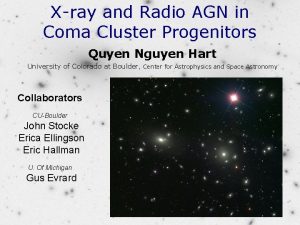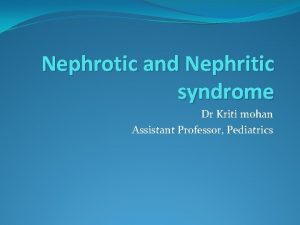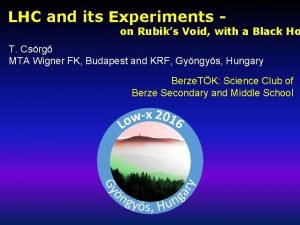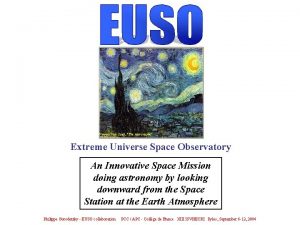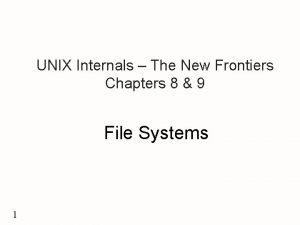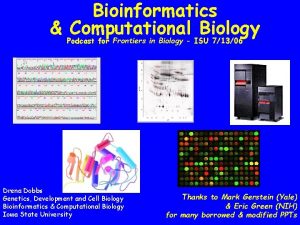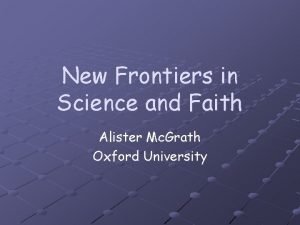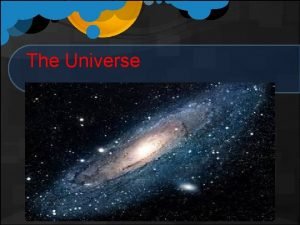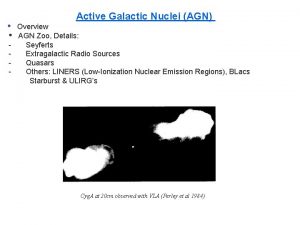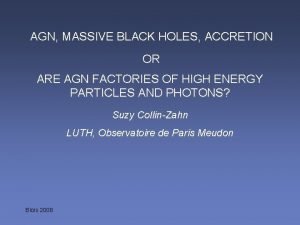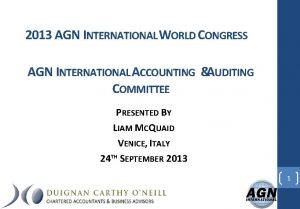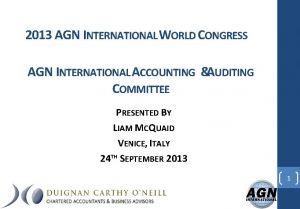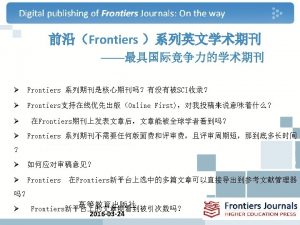AGN as extreme frontiers of our Universe H














- Slides: 14

AGN as extreme frontiers of our Universe H. Sol, LUTH, Observatoire de Paris ASTRONET meeting, Poitiers 2007

Exploring black hole magnetospheres ‘Extreme frontiers’ open one natural question : ‘How is the ‘transition layer ? ? ’ (the no man’s land or the « black hole magnetosphere » ) between - boundary conditions at the BH horizon (panel A) - and outer context of the host galaxy (panel B) (related to key question 2. 3 on strong gravity in action, and key question 2. 5 on accretion and jets)

The standard AGN cartoon Accretion disk (UV, X, optical) Host galaxy (blue) and its radio emission (orange) Dusty torus (IR, HAR, interfero) Central black hole (gravitational waves) multi-lambda mapping Hot gas and clouds (X, UV, IR, optical. . . ) Relativistic jet (gamma, X, radio neutrinos, CR. . . ) going beyond the ‘AGN paradigm’ …

Sub-questions Detailed description of the different media, of their interfaces and interaction, direct probes of their existence : disk/‘torus’/BLR/jet/wind Physical processes : various accretion regimes, jet formation, magnetism, turbulence, shocks, particle acceleration, radiation processes, origin and fate of gas and dust ? . . . Origine of activity ? Reservoir for AGN fuelling, conditions for active and quiet phases ? (Black hole active by accretion in AGN and blazars, or dorment as in our galactic center). Relative importance of the Blandford-Znajek process ? Relation between activity and star formation ? Which dominant parameters and conditions for radioloudness and radio-quiescence ? (Several clues for rotating BH question the validity of the spin of the central BH as dominant parameter for radio-loudness)

Experiments Very compact regions --> high and very high angular resolution experiments, and/or monitoring of variability (short time scales) Multi-spectral (from radio to Te. V gamma rays) and non-photonic emittors --> multi-wavelength and multimessengers approach Remote sources --> high sensitivity detectors

- Two types of experiments (in addition to those listed yesterday) Interferometry : VLBI, space VLBI (cf talk by A. Lobanov) futurist project of space X-ray interferometer (cf MAXIM …) large IR/optical interferometers (VLTI, OHANA on Mauna Kea, space interferometer) cf : recent interferometric observations of a few AGN dusty torus with MIDI at VLTI Very High Energy (VHE) ground based gamma-ray observatories (CTA: Cherenkov Telescopes Array) --> an emerging promising field in Europe with recent HESS (and MAGIC)

Background : Opening of the Te. V window A significant sample of Te. V sources; different types of sources New eyes on the VHE gamma ray sky revealed the richness of the cosmos at Te. Venergies.

The radiogalaxy M 87 : a new type of Te. V AGN Confirmation of the Te. V detection of M 87 by HESS Short time scale variability implies an emitting zone with size of a few Schwarschild radius (Dec 2006). Similar results on other AGN. Te. V observations explore the immediate BH surroundings. Constraint on LIR results in a constraint on the accretion regime. Strong constraints on particle acceleration processes

Modelling of spectral energy distribution ex : PKS 2155 -304 Past simultaneous data in radio, optical, X -rays and γ -rays Both leptonic and hadronic scenarios can still reproduce the spectra : importance of a larger spectral band

The galactic center 2 strong Te. V sources : . J 1745 -290 (Sgr A* ? ). G 0. 9+0. 1 200 pc, resolution < 6’ Mapping of diffuse Te. Vemission after subtracting two point sources. Correlation with molecular component (CS) (Nature, 2006) The Te. V flux requires a cosmic rays energy density > 3 times the one in sun environnement, and a harder spectrum : suggests recent acceleration of CR, < 10 000 years, near the G. C. (SNs or active BH) --> Detailed mapping of diffuse emission could inform on the temporal evolution of activity of the central BH …

Next generation of Cherenkov Telescopes (CTA) expected sensibility from G. Hermann, Nov 2006

Perspectives of statistical studies of Te. V AGN Different tests of AGN unifying schemes and classification by orientation; provide typical intrinsic Te. V AGN spectra. Develop the new VHE physics and modelling of BH magnetospheres With an AGN sample at different z, explore the gamma-ray horizon of our universe Very (high z Te. V blazars useful to constrain the IR extragalactic background, which partially absorb the VHE γ photons by pair creation : γVHE + γIR e+ e-) --> Cosmological issues on the extragalactic background light (EBL) Exploring the universe with VHE detectors Search for new types of cosmic sources, ‘dark’ accelerators Look for Te. V signature of primordial black holes ? Simultaneously, look for possible minor constituents of dark matter : cosmic strings (possible gamma sources), remnants of topological defects from primordial phase transition, ‘isolated’ BH expelled from host star clusters, unidentified Te. V sources --> a kind of guess but given our ignorance on VHE universe and surprises we already got, this may be an important area for CTA. Seeing the hidden universe with VHE gamma rays …

Synergy of CTA with other ground and space projects High mutual interest : getting a multi-spectral view of cosmic sources # CTA may provide the best chance to identify non-photonic sources (from cosmic rays, neutrinos or gravitational waves experiments) Ex : LISA event rate from 1 coalescence event every five years to hundreds of events per year obvious To. O for CTA Often said that BH merger does not emit elmg radiation … but this sounds strange given the complexity of the BH surroundings. Such event should affect activity and particle acceleration. --> Detect Te. V counterpart to identify the host source by CTA, then multi-lambda studies to get its z (in principle, LISA data could provide by themselves the distance but pb of major distorsion from random gravitational lensing) # Conversely high sensitivity multi-lambda detectors may find

CTA Physics Group meeting, Utrecht, November 2006
